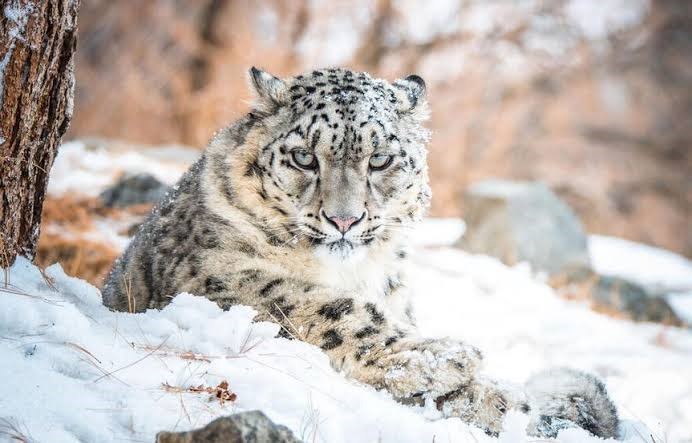





Disclaimer: Copyright infringement is not intended.
Context:
Details
Significance of the finding:
|
About Snow leopard: ●It is a Felidae (mammals in the order Carnivora) in the genus Panthera. ●It is an apex predator and flagship species of High Mountain Asia. ●Location and Habitat: ○Snow leopards inhabit high-altitude mountainous regions, including the Himalayas, and are well adapted to survive in harsh environments with extreme cold and sparse vegetation. ●Global distribution: snow leopards are found in 12 countries with the largest share in the Tibetan plateau of China, followed by Mongolia and India. Other countries include Russia, Afghanistan, Pakistan, Nepal, Bhutan, Kazakhstan, Tajikistan and Uzbekistan. ●India: Largely found in the high altitude cold, arid and rugged terrains of Jammu & Kashmir, Himachal Pradesh, Uttarakhand, Sikkim and Arunachal Pradesh. ●Challenges and Threats: ○Snow leopards face various threats in the wild, including habitat loss, poaching, human-wildlife conflict, and climate change impacts such as shrinking habitats and reduced prey availability. ●Vulnerable on the IUCN Red List. ●India is home to two per cent of the global range of the snow leopard. ●Country has 718 snow leopards, most of whom live in areas that are not under legal protection.
|
Way ahead
Must read:
https://www.drishtiias.com/daily-updates/daily-news-analysis/snow-leopard-6
Source:
|
PRACTICE QUESTION Q. Consider the following statements about snow leopards in India: 1) They are primarily found in the high-altitude mountain ranges of Central Asia. 2) They are classified as endangered species according to the IUCN Red List due to factors such as poaching and habitat loss. 3) They are known for their distinctive black spots and rosettes on their fur, providing effective camouflage in their snowy habitat. 4) They are solitary animals, except during the mating season or when a female is raising cubs. 5) Snow leopards are a type of big cat belonging to the genus Panthera, along with lions, tigers, and leopards. How many of the above statements is/are correct? A.Only one B.Only two C. Only three D. None Answer: A |










© 2025 iasgyan. All right reserved